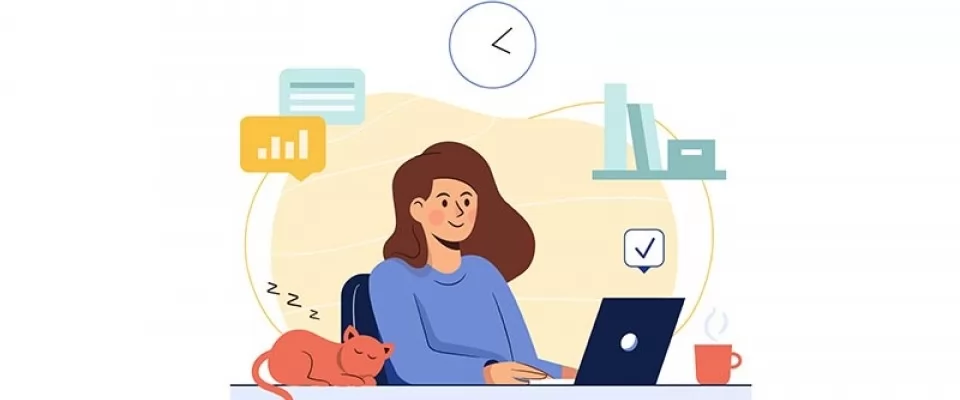Although not currently supported by browsers, there is a proposal for CSS nesting to support a feature that would provide better readability to native CSS, so in the future it is very likely that it will be supported and can be used directly.
The idea behind the CSS Nesting concept is the possibility of creating CSS rules (CSS code blocks) inside other CSS rules, nesting code and making it much easier to understand and maintain.
What does CSS nesting look like?
div {
background: #fff;
p { color: red; }
}
o for example
div {
background: #fff;
& p {
color: red;
}
}
If we are using PostCSS in our project, we can use it right now by translating it to native CSS with this tool, without having to wait for browsers to support it.
CSS nesting (&)
When writing CSS, we have to master and use basic CSS selectors and advanced CSS selectors to select the elements we want to style and write our specific rules. With CSS Nesting, it is not that we avoid using them, but we will use them less because by using indenting, we will be creating selectors in a "more logical for humans" way.
CSS Nesting is based on the possibility of including CSS blocks one inside the other (something that is not currently possible in native CSS), so it facilitates the organization of the code as it is read. The & character will be used to indicate that it is replaced by the entire parent selector we have (in this example, .item, but in cases with greater nesting will be longer):
.item {
padding: 10px;
& .warning {
background: red;
color: white;
}
}
We have the .warning class inside the .item block, so that implies that only .warning classes that are inside the .item element will be CSS styled. This translates to native CSS as follows:
.item {
padding: 10px;
}
.item .warning {
background: red;
color: white;
}
Perhaps with this example the advantage of CSS nesting is not yet clear, but as we write more code the advantages become apparent. If you have been working with CSS for any length of time, you will have noticed that one of the most complex things about CSS is maintaining code as it grows. This is where nesting shines.
Great advantages of using CSS Nesting:
- The first level of nesting can be used as a "component" or entity.
- It greatly simplifies CSS selectors, making them more intuitive (especially for novices).
- By indenting, the code becomes much more readable.
- By grouping with commas and nesting we get much more flexibility in less code.
- Finding code snippets is much easier (if we are organized).
Let's complicate a little more an example code with CSS nesting:
.menu,
.sidebar {
background: black;
color: white;
padding: 10px;
& a {
color: #333399;
font-size: 1.25rem;
}
& .warning {
background: red;
color: white;
}
}
.warning {color: red;}
Notice that in this example we have the a elements and the .warning classes inside both .menu classes and .sidebar classes. This will allow us to substantially avoid repeating code. This example would translate to native CSS as we will see below:
.menu,
.sidebar {
background: black;
color: white;
padding: 10px;
}
.menu a,
.sidebar a {
color: #333399;
font-size: 1.25rem;
}
.menu .warning,
.sidebar .warning {
background: red;
color: white;
}
.warning {
color: red;
}
As you can see, it is much easier to read the top example with CSS nesting than the latter, where as it grows it is much less readable.
Nesting on the parent
An interesting detail to keep in mind is that we can nest selectors over the parent, simply by taking into account whether or not there is a space between the nesting & symbol.
.item {
background: grey;
&:hover {
background: red;
}
}
In this code fragment, the nested selector &:hover is actually making reference to the selector .item:hover, that is, when we have the mouse over the element .item.
But on the other hand, if we were to add a space in the nested selector & :hover we would be referring to .item :hover, which has a different nuance than the previous one: we select when we have the mouse over an element that is inside .item.
The @nest rule
In some cases, with the & selector we can find some limitations. For this, with the @nest rule we can make the way of nesting selectors in our code more flexible and much more powerful.
For example, we can use the following code to reference any mention of the top-level parent:
.item {
background: grey;
@nest .container & {
background: green;
}
}
The @nest rule allows us to warn the browser that there is a reference to the parent selector in a part of the selector that we are writing (and that may even be later). This will allow us, for example, to organize groups of CSS code where any mention of a certain element appears.
The equivalent code in native CSS would be the following:
.item {
background: grey;
}
.container .item {
background: green;
}
As we can see, the & has been replaced by the selector that is nesting, so it works correctly.
Business vector created by jcomp - www.freepik.com

